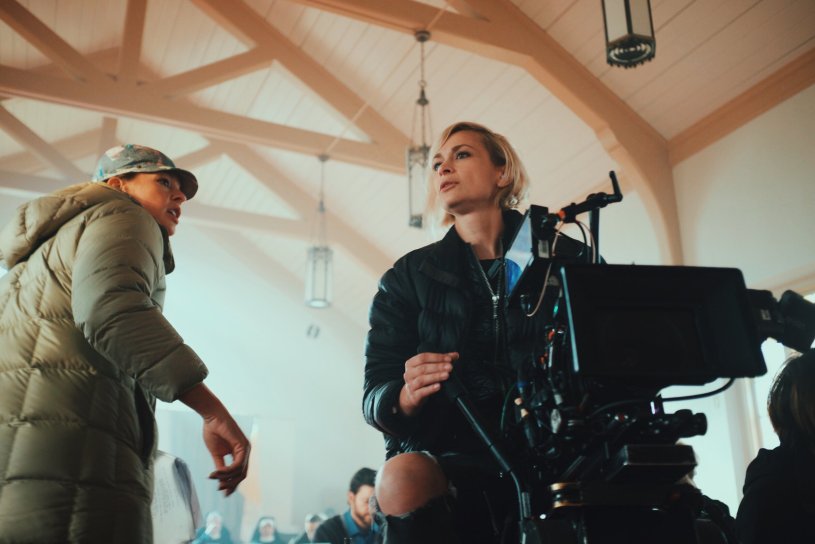Last week, a tragic incident saw cinematographer Halyna Hutchins killed and director Joel Souza injured after Alec Baldwin shot a prop gun on the set of Rust in New Mexico. In light of this, IF has republished below a 2018 blog post about firearm use on set by safety consultant and stunt coordinator Jon Heaney.
Firearms and their use, in any way, shape or form, are a topic for debate.
But it cannot be denied that firearms have been and will continue to be a useful tool in storytelling process.
Whenever firearms are introduced on set, a series of protocols must be adhered to in order to ensure the safety of the cast and the crew.
Now, laws changes from state to state, territory to territory or even country to country, but the fundamental protocols must always remain the same. If you ignore the protocols, you’ve already broken the law.
The protocols I refer to are as follows, but in no particular order of importance.
Firearms should only be supplied by a suitably qualified licenced (theatrical or motion picture) armourer. They should be kept in a locked box until required on set and returned to the armourer immediately upon completion of the scene.
At no time should the firearm be out of the sight or control of the armourer. Sometimes the firearm is used inside a room with restricted access and in these cases, the armourer performs clearances, distributes or places the firearm in its place and then leaves the room at the last moment so they can then observe the action outside via the monitors.
Once introduced onto set, i.e. supplied to the actors or even placed in an area to be used as a prop or set piece, clearance checks must be carried out each time the firearm is re-introduced. To clarify, this is the process of displaying to all those involved that the firearms at the time of introduction to set is empty – devoid of bullets or blanks.
The armourer will give all persons involved the opportunity to view the open firearm i.e. the chamber/magazine and the barrel. Some armourers will push a small rod or skewer down the barrel to prove the barrel is empty. Some will shine a torch down its length. Both actions are quite suitable and other options are also welcome. The final outcome is merely to point out that the barrel is in fact void of any object that may inadvertently become a projectile if and when blank fire is to be used.
These clearance checks must be performed by the 1st AD and the the safety supervisor in conference with the armourer.

Now is a good time to note that at no time are live rounds to be used on set as part of the storytelling procedure. I am specific in saying that as there are times and places where live rounds are used or carried onto a production, but these reasons are not part of the on set activity – to clarify, sometimes armed security or armed wildlife experts may be required. These are for the safety of the crew in extreme circumstances and under the control of specialist personnel, external of the on set activity.
No one is to leave set or wander off while in possession of a distributed firearm.
No one should wave the firearm around or point it at another or themselves outside of their directed action.
No unauthorised person should handle the firearm for any reason – if the stunt coordinator, the safety supervisor or stand by props need to handle the firearm for any reason they must request permission to do so prior.
A firearm should never be aimed and fired directly at anyone – with the exception of an empty gun having its trigger pulled and the muzzle flash later put in as a digital effect in post. This, however, must be performed under strict controlled conditions. Clearance checks must be repeated directly prior to the scene beginning or the trigger being pulled in situ.
Parallax error of the camera lens allows a certain amount of forgiveness as to where you need to point the firearm when acting out a scene. This can and should be determined by the stunt coordinator or the safety supervisor in conference with the director and the armourer.
A ‘dry fire’ demonstration should also take place under controlled conditions as a demonstration to all prior to any dry fire action taking place.
The armourer should ensure that all blank fire or effects supplied have been pre-tested under controlled conditions. These tests should be filmed for viewing by the director, the stunt coordinator, the safety supervisor and the 1st AD, if and when required, prior to the blank fire ammunition or effect being introduced or used on set. The option to demonstrate under controlled conditions should be available if required on the day of filming.
Ear, eye, personal and camera protection should also be supplied and distributed to all of those required to remain in the vicinity of the proposed action (if you’re not required – don’t be there; watch a monitor elsewhere). This PPE should be supplied by the safety supervisor who will also determine in conjunction with the armourer minimum safe distances and ‘no go’ zones for both cast and crew during the action sequences. If stunts are involved, the stunt coordinator may introduce extra parameters in consideration to any stunt action that is planned to take place in conjunction with the discharging of firearms.
If PPE is distributed to you, you are compelled to used it. If you choose not to or refuse, depending on your location at the time, you may be fined, charged or removed from site. If you’re injured after refusing to use distributed PPE you will not be able to make any insurance claim in some – if not all – cases. Not all hero’s win. Hearing damage isn’t immediate but it is permanent.
Please note: blank fire and effects are man-made individually and therefore have the potential to vary from one item to another. If the initial bang isn’t that loud, it doesn’t mean the next one won’t be. If the muzzle flash is small, it doesn’t mean you can move closer and remove your protection – the next one could be twice as big.
You are offered this information for your own protection. By all means where possible and practical ask questions, investigate, learn but don’t take it upon yourself to remove your safety gear or ignore the safety warnings.
Guns in any form are serious and should be taken seriously. If used under controlled conditions in the way they are intended to be used they pose no risk. When protocols and procedures are ignored, overlooked or disregarded that’s when they become a risk to all.
I assure you it takes just as long to do it the right way as it takes to do it the wrong way – the difference being the aftermath of doing it the wrong way takes a hell of a lot longer to get over.
More people would be alive today if even these measures were implemented.
As a disclaimer:
These protocols are not all the protocols that should be followed. All situations should be assessed individually; these are merely (in my opinion) the minimum protocols that should take place when introducing firearms onto a set.
Safety supervisors are not used on every set, however, it is my belief that an independent safety supervisor (one that is qualified and trained in hazardous action protocols as well as work health and safety legislations) should be on set whenever firearms are to be used as weapons or discharged on set.
I use the terms firearms and weapons deliberately. Firearms do not become a weapon or are viewed to be a weapon until they are used as one or portrayed as one.
It is also worth noting that in most countries that house a large film industry, all blanks used are now quality controlled and the volume of bang or flash can be altered. All armourers of repute have varieties that will offer this; normally on a scale of 1-2-3 – i.e. you will start with a moderate bang and flame and be able to work up from there. There are now powders which will not alter in volume but will increase in flash. This is however not always the case in all countries and territories.
If in doubt, always play safe.



